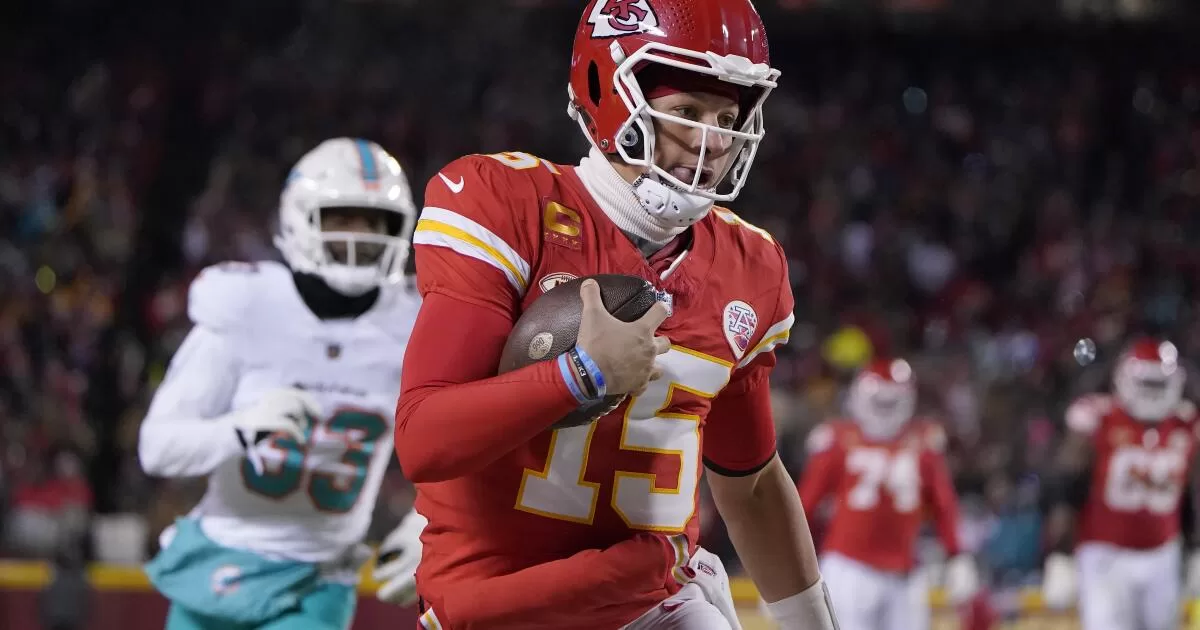The Kansas City Chiefs’ 26-7 win on Jan. 13 over the Miami Dolphins on NBC’s Peacock platform was the biggest livestreamed event in history and averaged 23 million viewers — higher than last year’s comparable matchup on TV. (Only fans in the markets of the two teams could watch the game on TV).
Parent company Comcast has not yet revealed how many subscribers the game added to Peacock’s 31 million total, but its president, Mike Cavanagh, told Wall Street analysts Thursday “we couldn’t be more pleased.”
But the success also generated speculation that it’s only a matter of time before the NFL’s premier event — the Super Bowl — will end up exclusively behind a streaming pay wall. (The Feb. 11 game streams this year on Paramount +, while available free in every television household on CBS).
Streaming-phobic fans and pearl-clutching traditionalists — upset whenever viewers have to pay for something they once got free — can relax at least until 2033, the last year of the current NFL media rights deal, which gives the Super Bowl to CBS, Fox, NBC and ABC. Hans Schroeder, executive vice president and chief operating officer of NFL Media, said in an interview the broadcast partners will have the big game through the rest of the contract.
“We’re very committed to the broad distribution of our games particularly our most popular games like the Super Bowl,” Schroeder said. “If you look out into our deals you know where the Super Bowl is going to be and it’s going to be on broadcast television.”
One TV sports executive who was not authorized to speak publicly said the value of reaching 100 million viewers in one shot as the Super Bowl has done annually since 2009, making it it the leading topic of the national conversation for weeks, is simply too compelling, even as streaming continues to grow.
But the NFL has maintained it needs to keep experimenting with streaming as younger viewers have adapted it as their primary source for video.
Schroeder noted that the median age for the audience for streaming-only telecasts, such as Amazon’s “Thursday Night Football” package and Peacock’s regular season airing of a Buffalo Bills-San Diego Chargers game in December, was eight years younger than viewers watching on traditional TV.
Changing technology is always disrupting the media business, and the NFL — the most consistently popular TV attraction — is a often a focal point in such situations.
In the 1980s, bars and taverns bought satellite dishes to pull in out-of-market NFL network telecasts, a handy attraction that was good for business if the home team wasn’t very good. By 1990, NFL rights holder CBS threatened to scramble its signals to protect its local stations. The network scrapped the plan, which irritated sponsor Anheuser-Busch, before the start of the season.
But by 1994, the concept of offering out-of-market games became a business. The NFL made them available to those willing to pay for for games through a subscription to Sunday Ticket on DirecTV. (The package is now on Google’s YouTube TV, which paid $2.5 billion for the rights).
As cable reached critical mass in the late 1980s, there were fears that consumers would have to have a pay TV subscription to see the Super Bowl. There were even fears it could become a pay-per-view event. A few U.S. senators proposed legislation to guarantee that major sporting events such as the Super Bowl and the World Series remain on a free national broadcast network.
Even with those changes and now the emergence of streaming, broadcast television has remained the core of the NFL’s distribution. It’s still the way for a consumer to watch their team every week of the season for free (outdoor TV antenna makers have said they see an uptick in sales and installation right before the college and NFL seasons begin).
But media companies have long used the NFL to build and sustain their businesses. Cable and broadcast stations have been able to command fees from pay TV operators to carry their programming largely due to their rights to NFL telecasts.
Those companies will now likely look to the NFL to help build their streaming platforms.
Cavanagh said Peacock saw “record levels of hours viewed” in the days after the wild card game, and that the company is now “focused on retention of the subs that came in right after the game.”
The NFL has yet to decide on whether another playoff game will be a streaming-only event next season. But you can bet it won’t be the Super Bowl.
